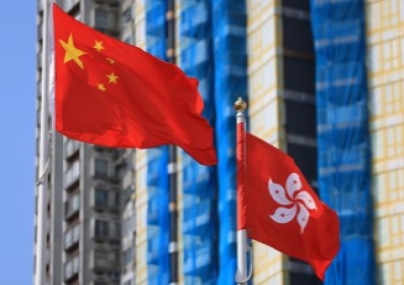
The ongoing trade and diplomatic tensions between the U.S. and China have continued to dominate media reports in the lead up to the tentative March 1 deadline for both countries to resolve their tariff disputes. But with no clear resolution in sight, lawyers working in the region are doing what they can to minimize the impact and maintain stability amid tumultuous times.
ALB: To what extent are fractured U.S.-China diplomatic relations affecting clients in both countries (and beyond), and how is that impacting the work you are doing?
Sandra Seah, joint managing partner, Bird & Bird ATMD
The U.S.–China trade tensions are clearly affecting business sentiment, casting a cloud of uncertainty. There are limited actions that regional governments can do to ameliorate the business climate, so our clients are adapting to the volatility in their own way.
Since the start of the trade tensions, U.S. foreign direct investment into Singapore has been somewhat subdued, particularly in the traditional manufacturing and the wholesale and retail trade sectors. The volume of work that we have seen for U.S. corporations setting up a presence in the region has declined. However, many multinational corporations in the region are also cautiously seeking to minimize their dependence on U.S. or China, by transferring their headquarters to a neutral jurisdiction such as Singapore, or relocating their manufacturing processes out of China to, for instance, Malaysia or Vietnam. This yields a healthy amount of corporate restructuring work, many involving multi-jurisdictional asset transfers or intra-group debt restructures. Our employment, privacy and IP lawyers have also been kept busy with work revolving around the movement of manpower, data and intellectual property assets.
We note increasing interest from our clients in relocating supply chain operations into Southeast Asia leading to a healthy influx of adaptive technologies to this region. There is good demand for Bird & Bird's expertise to support corporations which are undergoing digital transformation or entering the data economy. We see an uptick in legal demand for IT law, technology alliances, procurement law, and outsourcing. In the long run, China may well respond with more transparent markets and IP reforms, potentially sparking off a fresh wave of demand for legal support in strategic investments, infrastructure projects and IP asset management.
Cori Lable, partner, Kirkland & Ellis
As a U.S.-qualified lawyer based in Hong Kong, I advise clients every day on international regulatory compliance risks related to cross-border investments and operations. Current diplomatic and trade relations between the U.S. and China have affected our practice in several ways. Certain foreign investors, particularly those looking at manufacturing or other industries potentially affected by increased tariffs, are evaluating the viability of alternative markets like Southeast Asia and India. More general concerns about whether the Chinese economy is poised for a downturn have led some clients to counter-cyclically evaluate whether they want to make more special situations-type investments in China or opportunistically acquire distressed assets. If the Chinese economy does enter a recession, we similarly anticipate an uptick in financial fraud investigations and disputes in China. Finally, we’ve had increased requests for advice from Chinese clients on compliance with U.S. economic sanctions and export control regulations in the wake of the high-profile cases involving telecommunications companies ZTE and Huawei, and mandates from clients around the world on how to navigate and comply with the overlapping (but by no means congruent) requirements of the Chinese Cybersecurity Law and the EU General Data Protection Regulation. And recent reforms of the U.S. CFIUS regime governing foreign investments into the United States add another layer of complexity to China-outbound acquisitions, to which our clients are paying close attention.
James Lin, partner, Davis, Polk & Wardwell
The current trade tensions mean that it will be very difficult to get outbound mergers and acquisitions from China into the U.S. done, especially for technology sector deals in sensitive industries, in light of the recent changes to CFIUS review. For capital markets, our current pipeline is strong, but as the trade tensions create further uncertainty in China’s macroeconomic environment, this will obviously impact the ability of companies to go public if their businesses are adversely affected by general macroeconomic conditions. We are keeping an optimistic outlook in the near term.
US and China are sketching the outlines of a deal to end the trade war
By Damir Sagolj of Reuters
The U.S. and China have started to outline commitments in principle on the stickiest issues in their trade dispute, marking the most significant progress yet toward ending a seven-month trade war, according to sources familiar with the negotiations.
The world's two largest economies have slapped tit-for-tat tariffs on hundreds of billions of dollars of goods, slowing global economic growth, skewing supply chains and disrupting manufacturing.
As officials held high-level talks last month in Washington, they remained far apart on demands made by U.S. President Donald Trump's administration for structural changes to China's economy.
But the broad outline of what could make up a deal is beginning to emerge from the talks, the sources said, as the two sides pushed for an agreement by March 1. That would mark the end of a 90-day truce that Trump and Chinese President Xi Jinping agreed to when they met in Argentina late last year.
Negotiators are drawing up six memorandums of understanding on structural issues: forced technology transfer and cyber theft, intellectual property rights, services, currency, agriculture and non-tariff barriers to trade, according to two sources familiar with the progress of the talks.
At meetings between U.S. and Chinese officials earlier in Beijing the two sides traded texts and worked on outlining obligations on paper, according to one of the sources.
COMMITMENTS IN WRITING
The MOUs cover the most complex issues affecting the trading relationship between the two countries and are meant, from the U.S. perspective, to end the practices that led Trump to start levying duties on Chinese imports in the first place.
One source cautioned that the talks could still end in failure. But the work on the MOUs was a significant step in getting China to sign up both to broad principles and to specific commitments on key issues, he said.
Several Chinese government sources told Reuters that the two countries have basically reached a consensus on alleviating the trade imbalances, but there were still some differences on each other's "core demands" that they were seeking to narrow.
"It can be said that we are now in the sprint phase, and both negotiating teams are working towards the goal of reaching an agreement within the deadline, but some problems are still quite complicated to resolve," said one Chinese official familiar with the situation.
The U.S. has accused Beijing of forcing U.S. companies doing business in China to share their technology with local partners and hand over intellectual property secrets. China denies it engages in such practices.
Trump administration officials also object to non-tariff barriers in China, including industrial subsidies, regulations, business licensing procedures, product standards reviews and other practices that they say keep U.S. goods out of China or give an unfair advantage to domestic firms.
U.S. Treasury Secretary Steven Mnuchin has pushed for China to open its financial services markets to more foreign firms, including credit card giants Visa and MasterCard, which have waited years for China to make good on promises to allow them to operate there.
On currency, U.S. officials including Mnuchin have warned China against devaluing its yuan to gain a competitive advantage after the Chinese currency weakened significantly against the dollar last year, partly counteracting Trump's tariffs.
The two sides were discussing an enforcement mechanism for the deal, the source said. Reuters reported last month that the United States was pushing for regular reviews of China's progress on pledged trade reforms and could reinstate tariffs if it deems Beijing has violated the agreement.
The parties also were looking at a 10-item list of ways that China could reduce its trade surplus with the U.S., including by buying agricultural produce, energy and goods such as semiconductors, according to two other sources familiar with the talks.
To contact the editorial team, please email ALBEditor@thomsonreuters.com.



